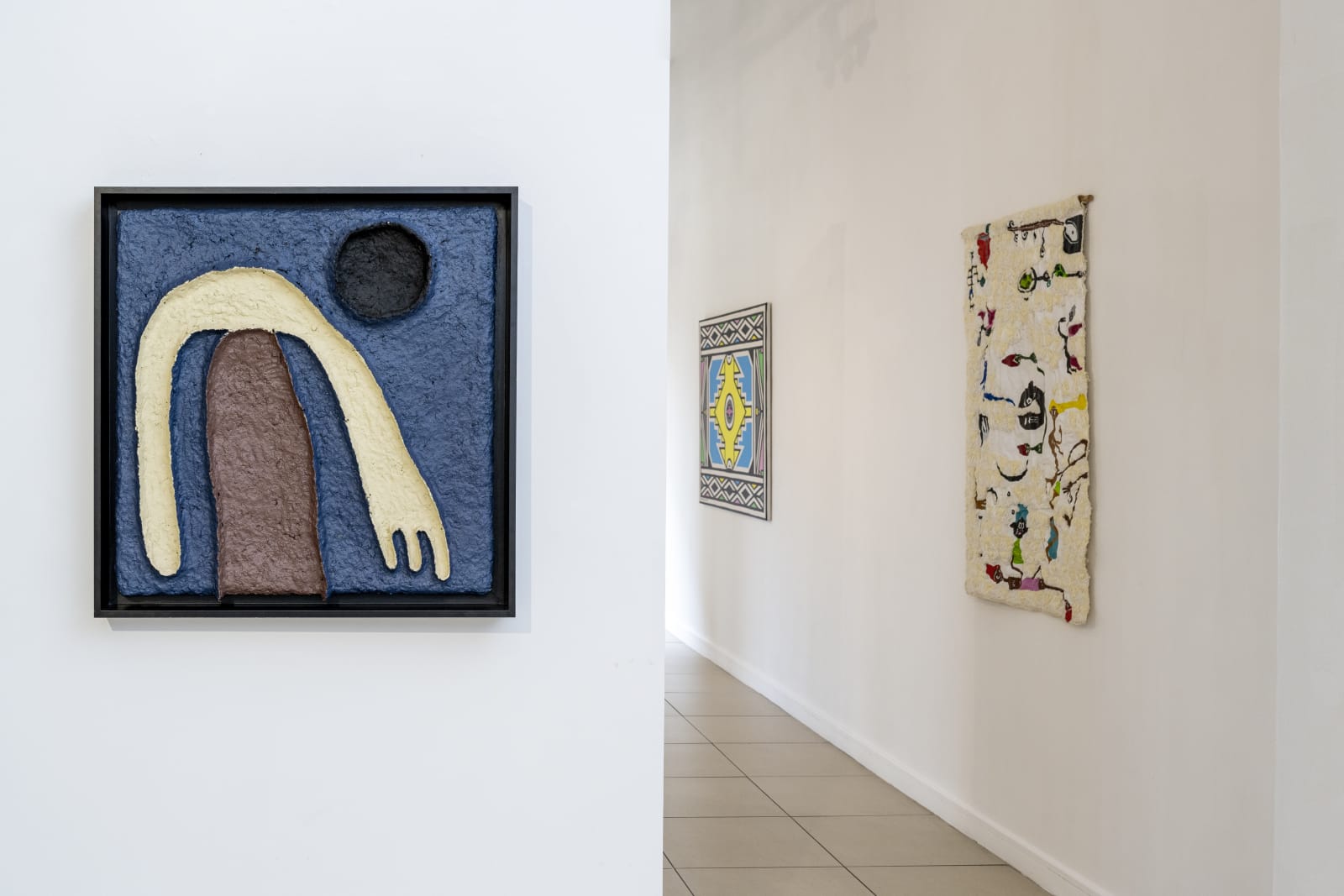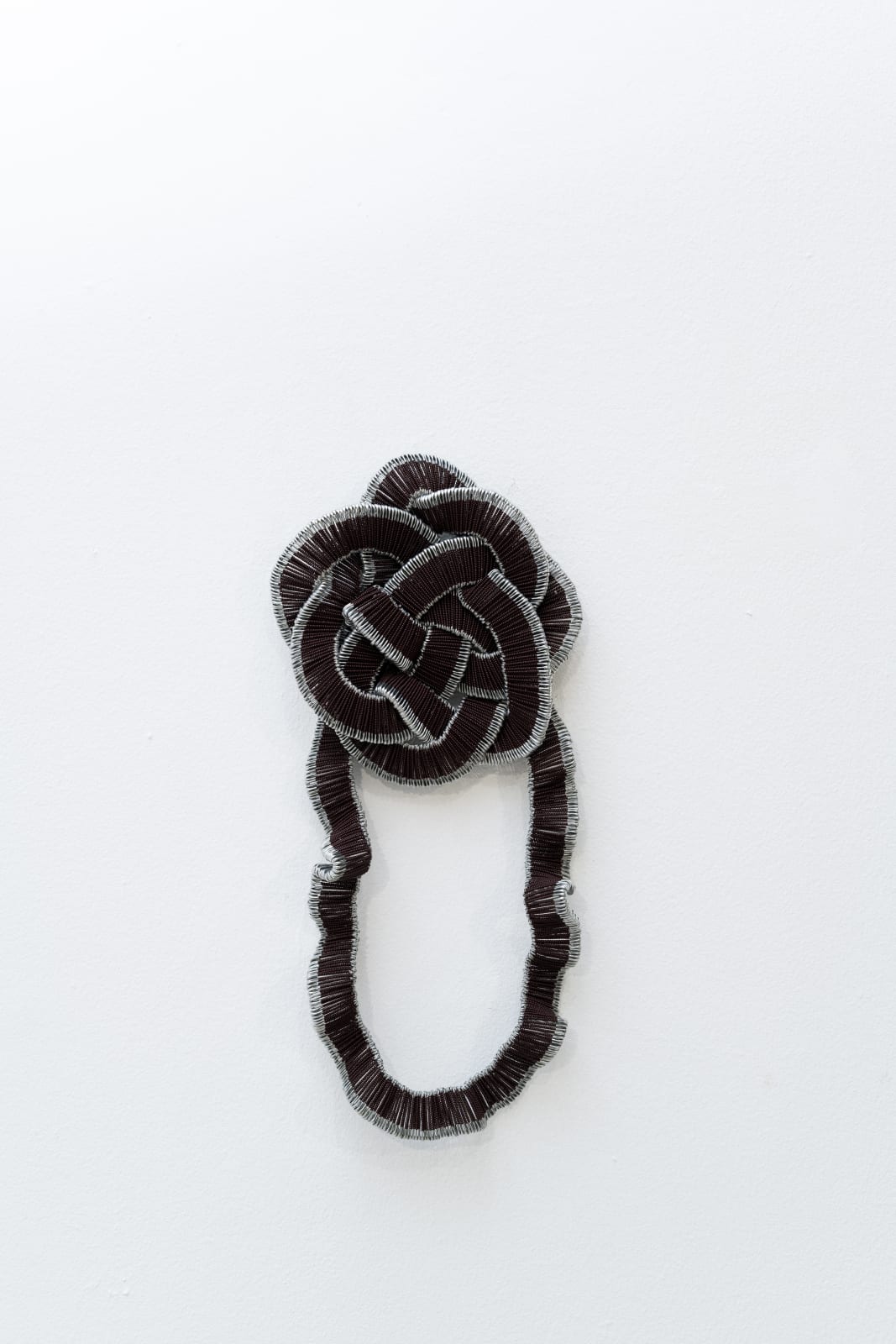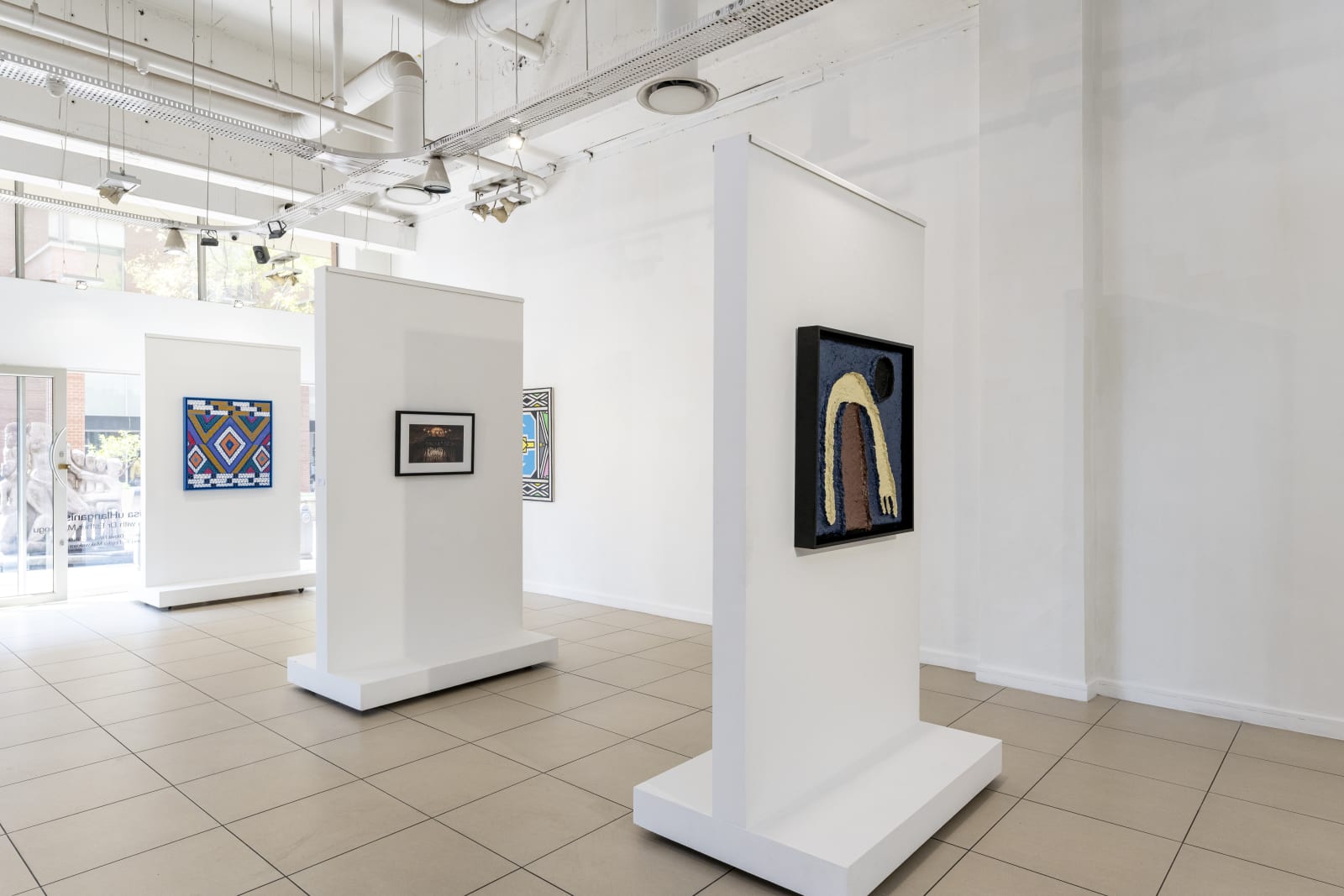In Hlukanisa, uHlanganise which translates to take apart (deconstruct) in order to reconstruct/create anew we step into a field of knowledge transmission where language, lineage, and materiality intersect. This exhibition convenes an intergenerational dialogue between the iconic Dr. Esther Mahlangu and contemporary artists Charity Vilakazi, Tinyiko Makwakwa, Nikiwe Dlova, Puleng Mongale, and Nwabisa Ntlokwana. The show includes paintings, sculpture, textiles, photography, and digital media. Their works navigate the terrains of African epistemologies, where science, memory, and the body exist as sites of inscription, transference, and renewal.
Dr. Esther Mahlangu’s iconic Ndebele mural painting practice, understood as umgwalo, anchors the exhibition. She inscribes familial histories onto the surfaces of homes, using geometry and color to construct a visual language that extends beyond aesthetics into the metaphysical. Building on this lineage, the participating artists explore acts of ukulanda - the process of fetching and retrieving ancestral knowledge, through a range of material engagements.The exhibition navigates the ways materiality mediates memory. Garments passed down, repurposed, and transformed become vessels for lineage, imbued with both personal and collective histories. Through textiles, umgwalo (inscription), hair, ochre, and intricate linework, the artists explore the fluidity of cultural transference; how it is preserved, interrupted, and reclaimed.
Puleng Mongale, working with garments passed down through generations, creates self-portraits that multiply her body, enacting an embodied excavation of lineage. “In the absence of archival images, these garments became my entry point,” she reflects, “they hold the memory of the women I come from.” Her work, in dialogue with Nikiwe Dlova’s studies on hair as a mathematical coded language, traces histories of braiding as an inscriptional act, one where knowledge is mapped onto the scalp, where designs carried messages of status, kinship, and resistance. Hair, as a site of storytelling, collapses time, allowing the past to touch the present.
Charity Vilakazi expands this notion of language, looking at Zulu beadwork as a visual lexicon where color and form encode messages of love, marriage, and ancestry. She draws links between this tradition and umgwalo, gesturing toward how African societies have always written their histories, just not in the ways the colonial gaze deems legitimate. Her work, informed by the symbolic weight of amaNono (children who pass away at a young age), embraces a childlike sense of wonder, suggesting that play and intuition can serve as pedagogical tools within artistic practice. “There is intelligence in absurdity,” Tinyiko Makwakwa notes, speaking to her use of red ochre and natural dyes, “these materials have been protecting and preserving us long before we knew why.” Her work interrogates indigenous knowledge systems within architecture, reflecting on how African cosmologies shaped built environments. The rondavel, for instance, takes its form from celestial bodies - the sun and moon - mostly positioned east-facing in alignment with the rhythms of the earth.
This entanglement between material and metaphysical worlds continues in Nwabisa Ntlokwana’s sculptures, which distort the weight and density of objects, subverting expectation. Her use of paper-mâché, a fragile yet resilient material, speaks to the tension between strength and vulnerability, while her use of leather gestures towards ritual and a return to the earth. “I want to sculpt what is unseen,” she shares, “to create something that speaks to our knowing beyond the physical.”
By interrogating materiality as a site of knowledge-making, Hlukanisa, uHlanganise asks: what if learning did not need to be didactic to be legitimate? If African histories have always been written - onto walls, woven into braids, shaped into clay, inscribed in ochre - how do we recover and honor these ways of knowing? The exhibition does not seek to simply preserve these traditions but rather to extend them, to take apart in order to reconstruct anew. Through acts of remembering, reshaping, and reimagining, these artists participate in a broader lineage of Black feminist thought, where the matrilineal archive is neither fixed nor lost, it is always in flux, being remade in the present.





